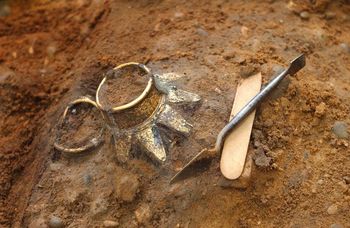Scope of this guide
3D datasets that commonly appear online as interactive models or as images within research reports and papers are often the end result of long and complex data capture and manipulation processes (often referred to as ‘pipelines’). Although an understanding of data capture methodology is key to interpreting the final 3D product, this guide focusses purely on the preservation and documentation of 3D models that are created at the end of these capture processes. A key project of recent years that has focussed on 3D data creation and documentation is the 3D-ICONS project[1] which has created detailed guidelines on the “documentation of the digitisation, modelling and online access pipeline for the creation of online 3d models of cultural heritage objects.” (3D-ICONS 2014, 6). Users of this guide are therefore directed towards the 3D-ICONS Guidelines (2014) for a detailed overview of 3D capture techniques and the types of post-processing involved in the creation of 3D models (De Luca 2014). A detailed overview of the algorithms and methods used in processing and visualising 3D data is also provided by Callieri et al. (2011).
This guide additionally draws heavily on the work undertaken by McHenry et al. (2008, 2010, 2011) looking at various 3D file formats in terms of significant properties, data conversion, and information loss. Users of this guide should be aware that only a small subset of those formats looked at by McHenry are summarised here and that a number of formats have both emerged and evolved within recent years and continue to do so.
Lastly, the information in this guide should also be combined with the archiving and documentation guidelines found in other Guides to Good Practice in this series focussed on specific data capture or creation processes such as Laser Scanning, Photogrammetry, and CAD. Other relevant information may also be found in the case studies section, particularly on Structured light scanning on the Digitising osteological material case study.



